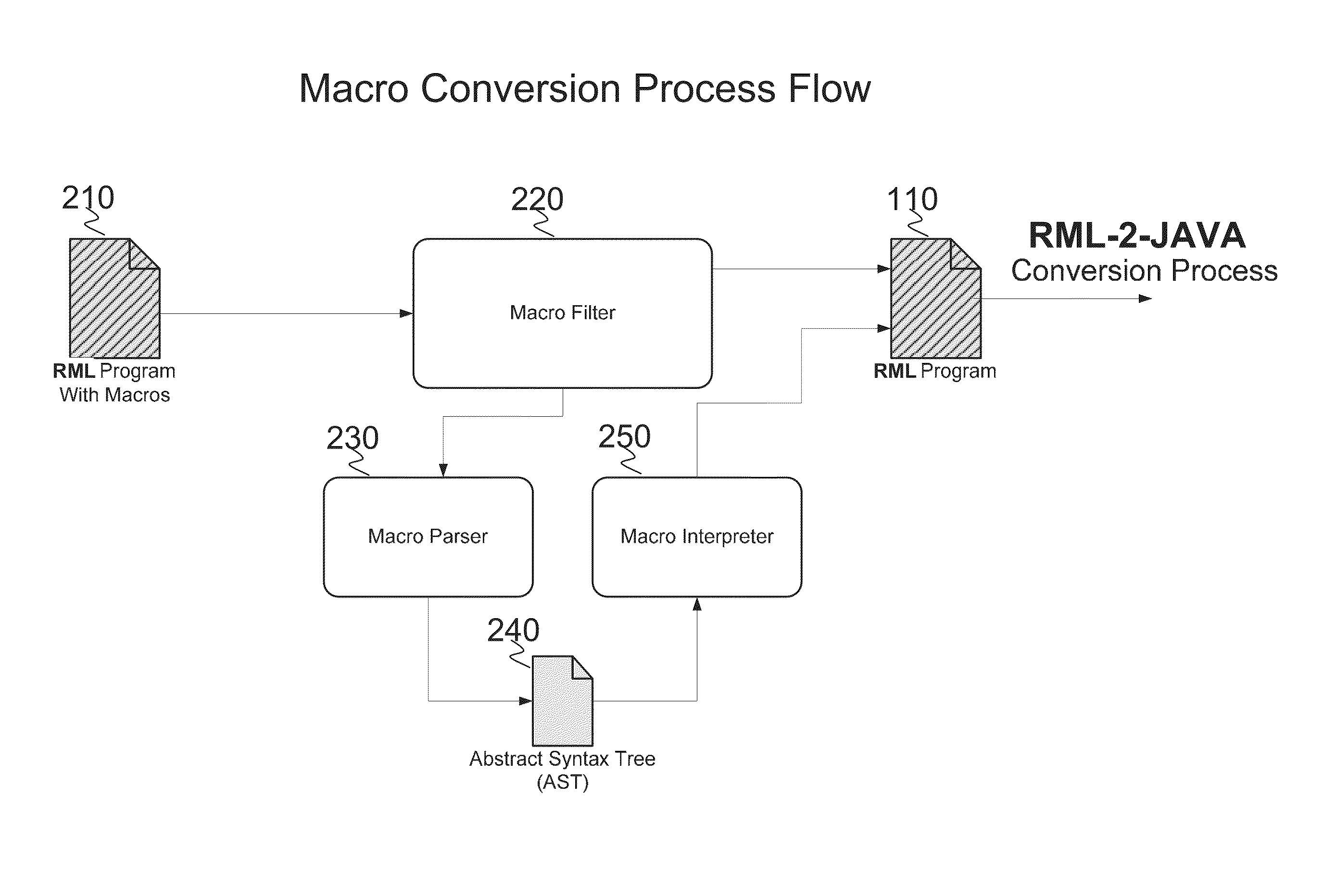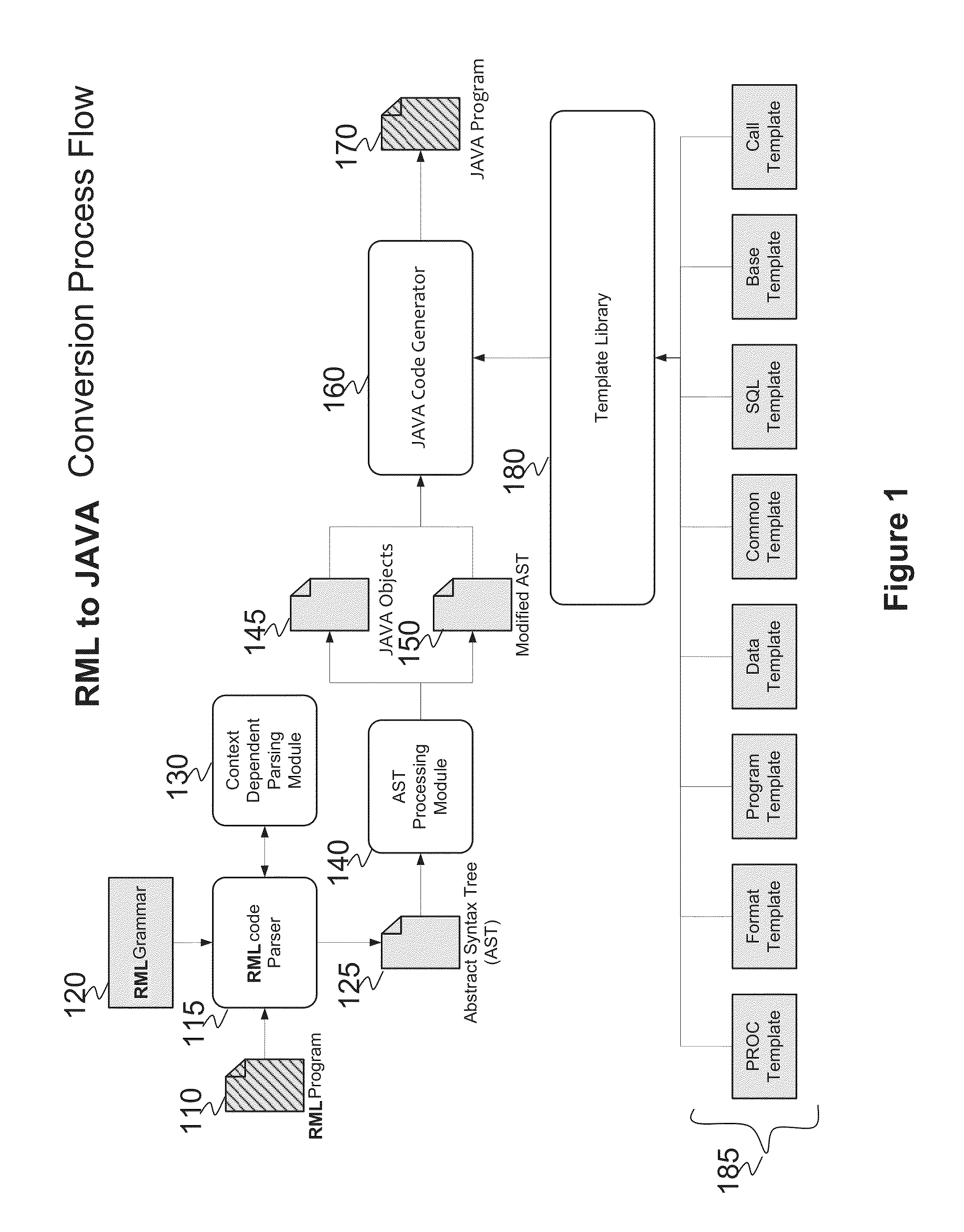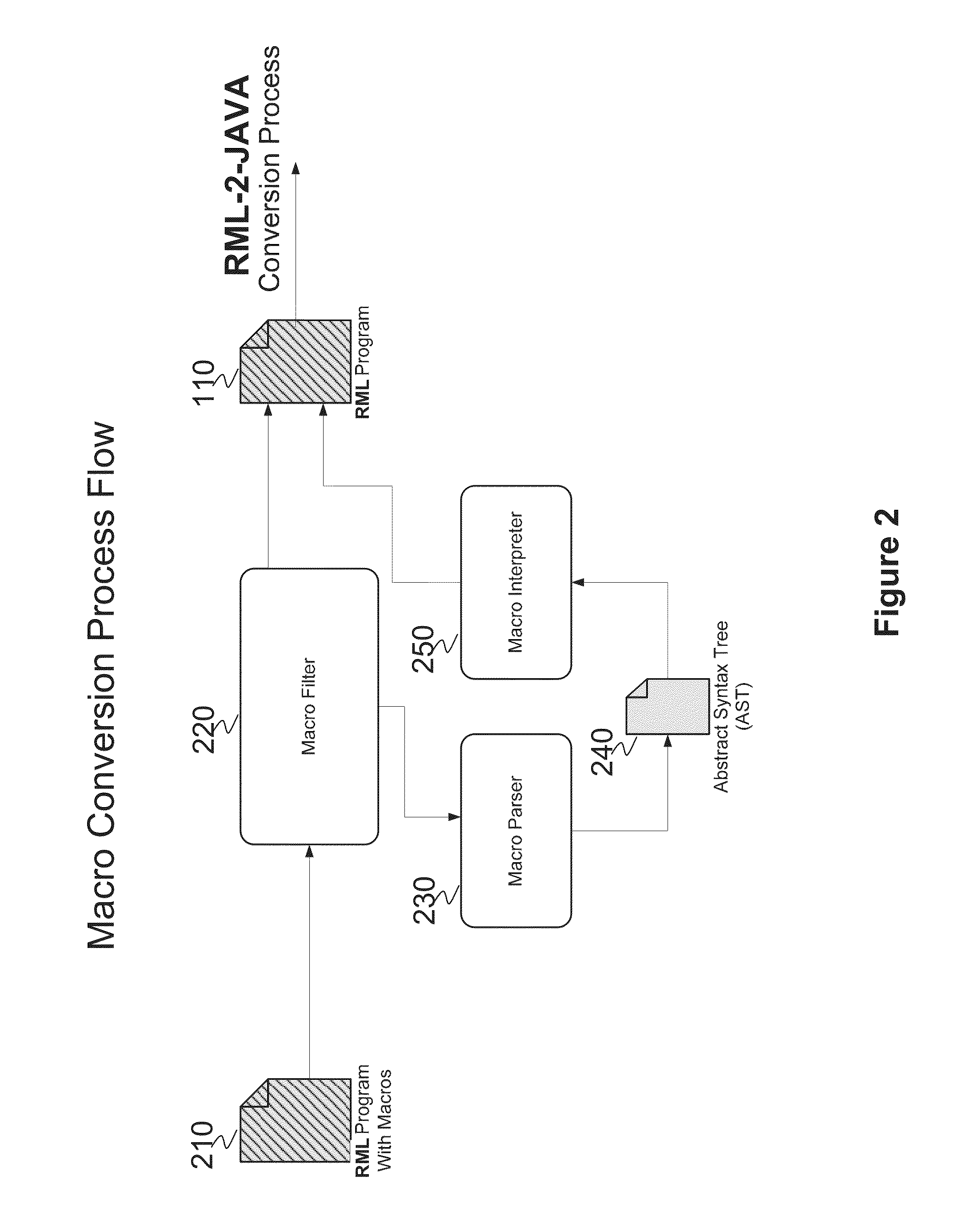System and method for converting base SAS runtime macro language scripts to JAVA target language
a script and target language technology, applied in the field of system and method for converting base sas runtime macro language scripts to java target language, can solve the problems of difficult natural languages pose additional difficulties, and difficulty in if not impossible to provide a fully automated conversion that retains the functionality of the source language, so as to reduce the cost of legacy sas code maintenance, the effect of overcoming
- Summary
- Abstract
- Description
- Claims
- Application Information
AI Technical Summary
Benefits of technology
Problems solved by technology
Method used
Image
Examples
example 1
[0043
[0044]Input +1;
[0045]Interpretations:
[0046]1 increment variable named input by one, or
[0047]2 in the input buffer, move to the next column.
[0048]If there is no variable named “Input”, SAS chooses the second meaning.
example 2
[0049
[0050]ARRAY NOT(2); *describes an array of two elements
[0051]A=not(2);
[0052]Interpretations:
[0053]1 apply logical operation not to number 2
[0054]2 takes the second element of array not.
Lack of Context-Free Grammar to Describe the Language
[0055]Many Base SAS options allow further options. These options do not follow any regular pattern and can not be described using BNF.
Embedded Constructions
[0056]The SAS X statement allows operating system commands to be written within the SAS program for execution during program interpretation.
Interaction of MACRO Language with Run-Time Execution.
[0057]Base SAS does not allow:
[0058]1. user defined functions or subroutines.
[0059]2. conditional logic or loops across multiple DATA steps and PROCs.
[0060]3. sharing variables across DATA steps or PROCs.
[0061]To solve these problems, SAS introduced a macro language. Compared with C / C++, the macro language SAS MACRO has a unique feature: it can interact with SAS runtime. By using this feature (or, mor...
PUM
 Login to View More
Login to View More Abstract
Description
Claims
Application Information
 Login to View More
Login to View More - R&D
- Intellectual Property
- Life Sciences
- Materials
- Tech Scout
- Unparalleled Data Quality
- Higher Quality Content
- 60% Fewer Hallucinations
Browse by: Latest US Patents, China's latest patents, Technical Efficacy Thesaurus, Application Domain, Technology Topic, Popular Technical Reports.
© 2025 PatSnap. All rights reserved.Legal|Privacy policy|Modern Slavery Act Transparency Statement|Sitemap|About US| Contact US: help@patsnap.com



